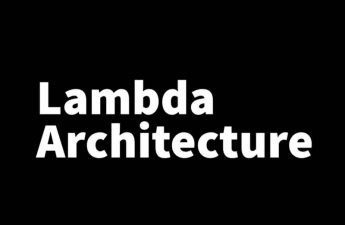Generalized Architecture of Big Data Systems is designed to handle the ingestion, processing, and analysis of data that is too large or complex for traditional database systems.

Big Data Applications:
Big data solutions typically involve one or more of the following types of workload:
- Batch processing of big data sources at rest
- Real-time processing of big data in motion
- Interactive exploration of big data
- Predictive analytics and machine learning
Big Data Systems Components:
Most big data architectures include some or all of the following components –
- Data sources: All big data solutions start with one or more data sources like databases, files, IoT devices, etc.
- Data Storage: Data for batch processing operations are typically stored in a distributed file store that can hold high volumes of large files in various formats.
- Batch processing: Because the data sets are so large, often a big data solution must process data files using long-running batch jobs to filter, aggregate, and otherwise prepare the data for analysis. Usually, these jobs involve reading source files, processing them, and writing the output to new files.
- Real-time message ingestion: If the solution includes real-time sources, the architecture must include a way to capture and store real-time messages for stream processing.
- Stream processing: After capturing real-time messages, the solution must process them by filtering, aggregating, and otherwise preparing the data for analysis. The processed stream data is then written to an output sink.
- Analytical datastore: Many big data solutions prepare data for analysis and then serve the processed data in a structured format that can be queried using analytical tools. The analytical data store used to serve these queries can be a Kimball-style relational data warehouse, as seen in most traditional business intelligence (BI) solutions.
- Analysis and reporting: The goal of most big data solutions is to provide insights into the data through analysis and reporting.
- Orchestration: Most big data solutions consist of repeated data processing operations, encapsulated in workflows, that transform source data, move data between multiple sources and sinks, load the processed data into an analytical data store, or push the results straight to a report or dashboard. To automate these workflows, you can use an orchestration technology such as Azure Data Factory or Apache Oozie and Sqoop.
Big data architecture Usage:
Consider this architecture style when you need to-
- Store and process data in volumes too large for a traditional database
- Transform unstructured data for analysis and reporting
- Capture, process, and analyze unbounded streams of data in real-time, or with low latency
Big data architecture Benefits:
- Technology choices: A variety of technology options in open source and from vendors are available.
- Performance through parallelism: Big data solutions take advantage of parallelism, enabling high-performance solutions that scale to large volumes of data.
- Elastic scale: All of the components in the big data architecture support scale-out provisioning, so that you can adjust your solution to small or large workloads, and pay only for the resources that you use.
- Interoperability with existing solutions: The components of the big data architecture are also used for IoT processing and enterprise BI solutions, enabling you to create an integrated solution across data workloads.
Big data architecture Challenges:
- Complexity: Big data solutions can be extremely complex, with numerous components to handle data ingestion from multiple data sources. It can be challenging to build, test, and troubleshoot big data processes.
- Skillset: Many big data technologies are highly specialized and use frameworks and languages that are not typical of more general application architectures. On the other hand, big data technologies are evolving new APIs that build on more established languages.
- Technology maturity: Many of the technologies used in big data are evolving. While core Hadoop technologies such as Hive and Pig have stabilized, emerging technologies such as Spark introduce extensive changes and enhancements with each new release.
Thank you for reading. We hope this gives you a brief understanding of the latest news. Are you interested read about other latest technology-related news? Explore our Technology News blogs for more.



